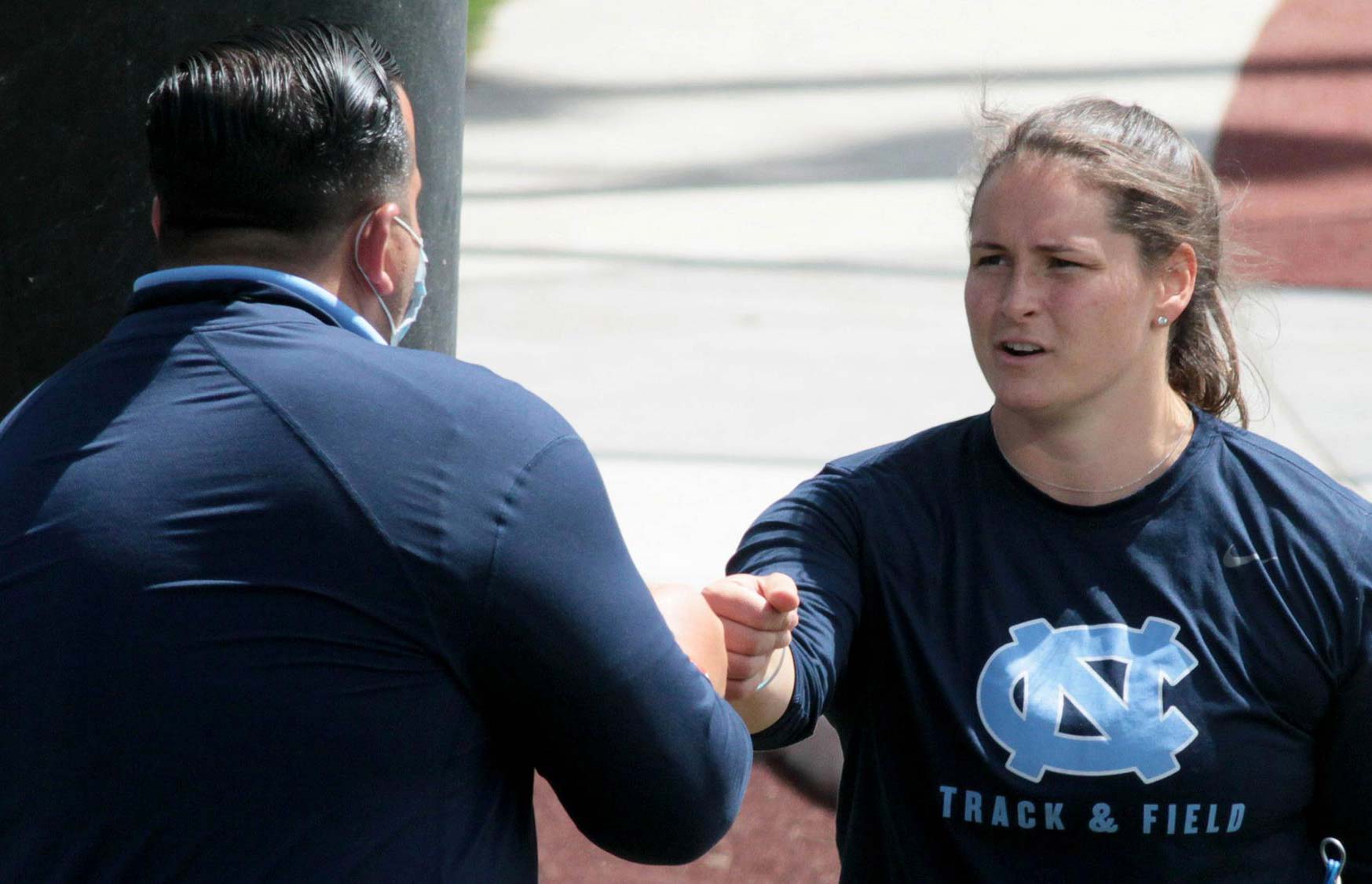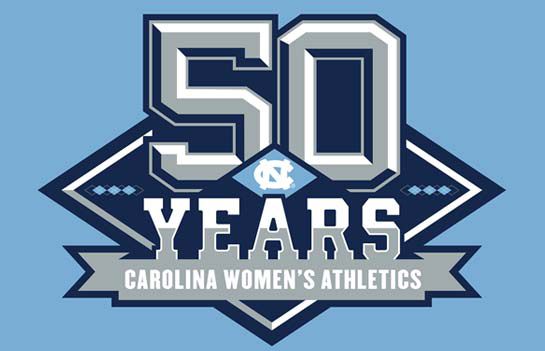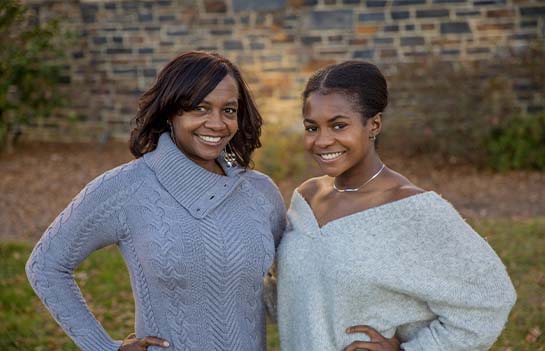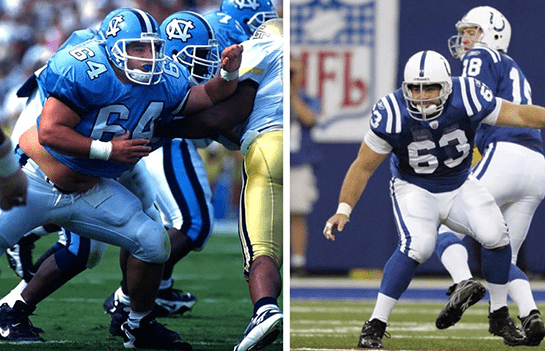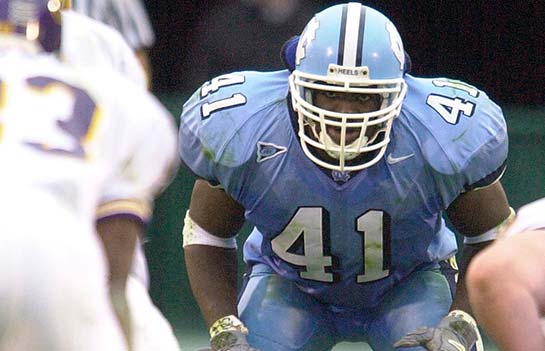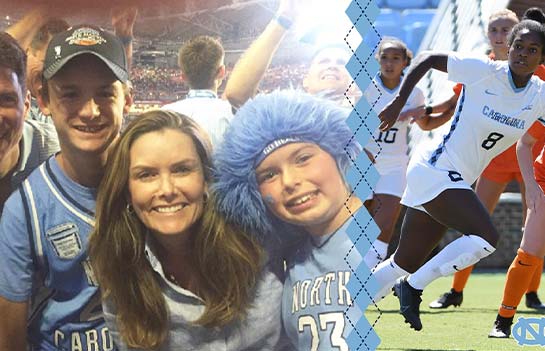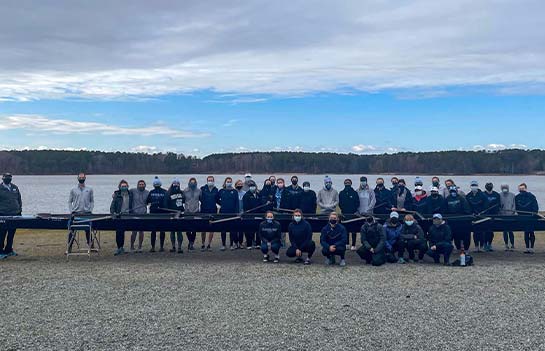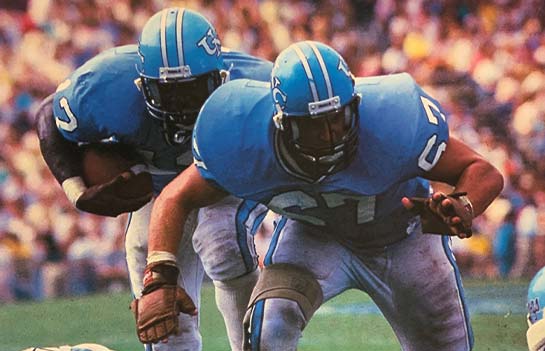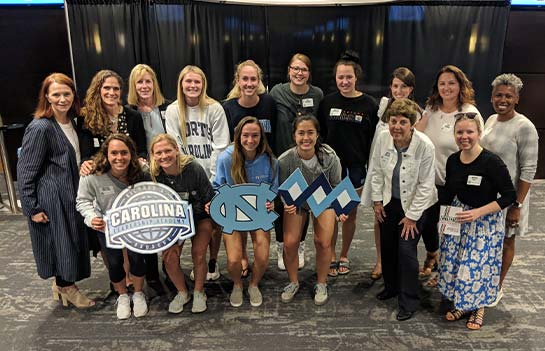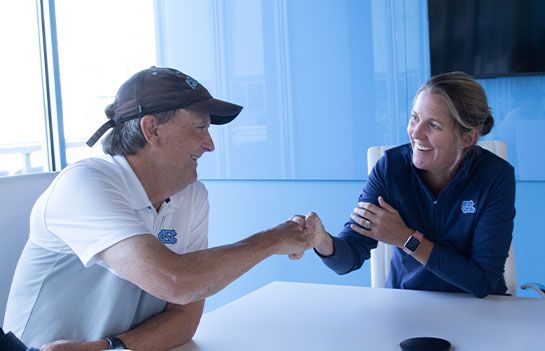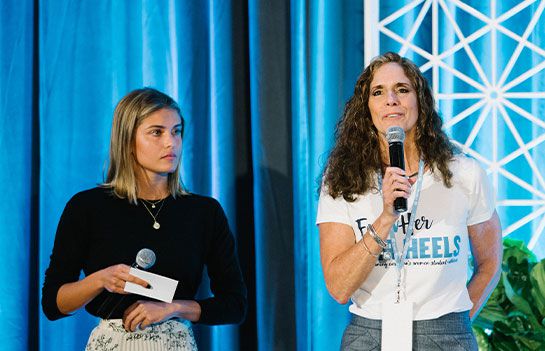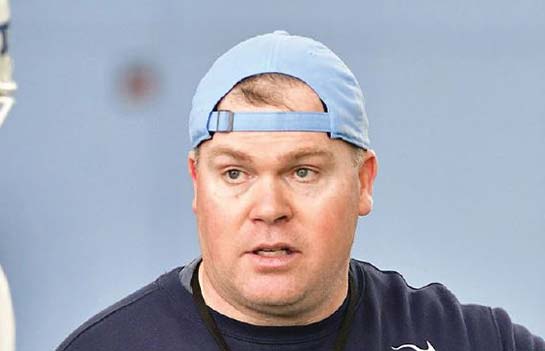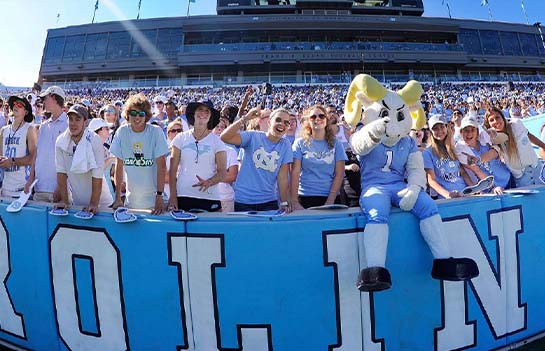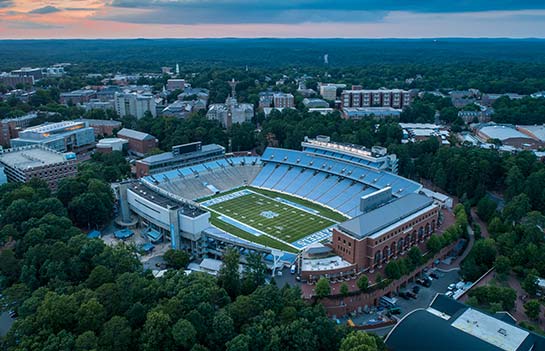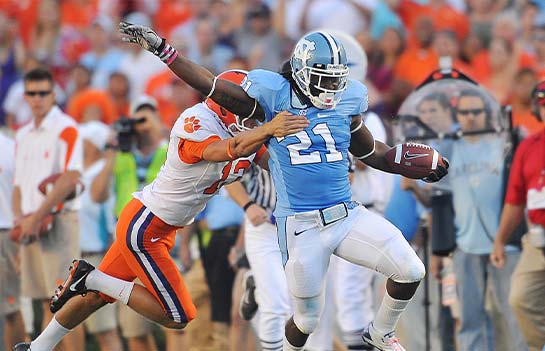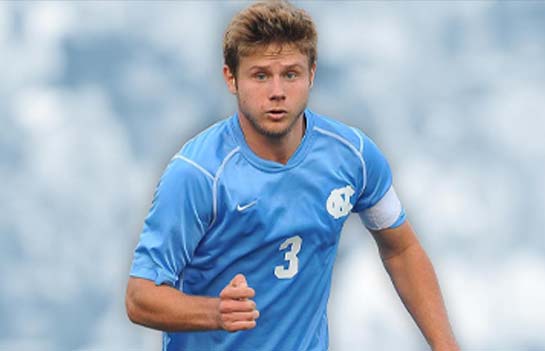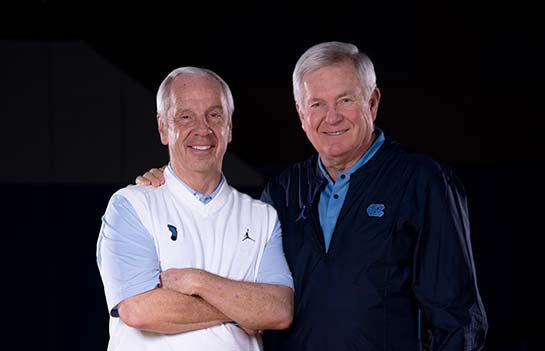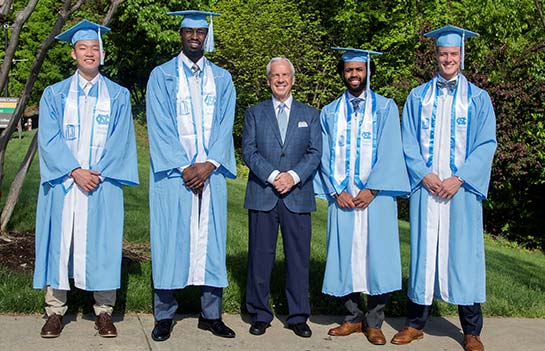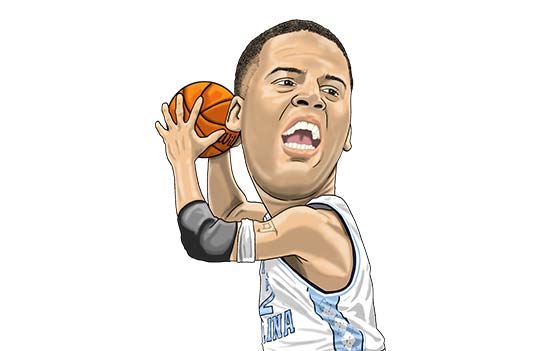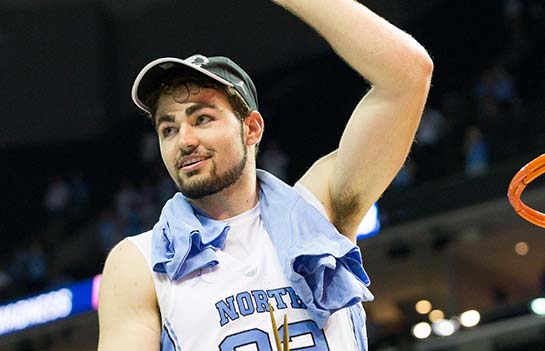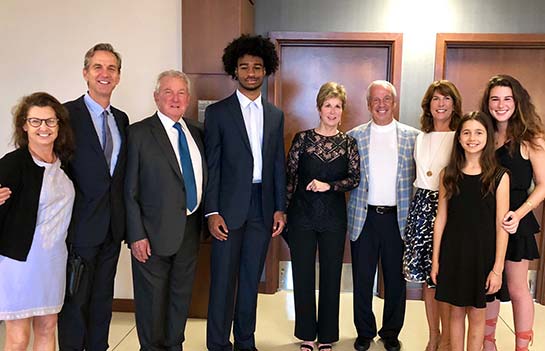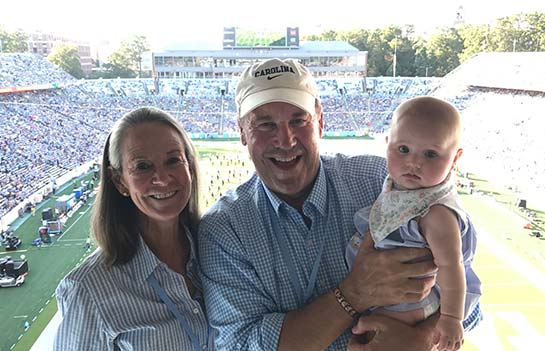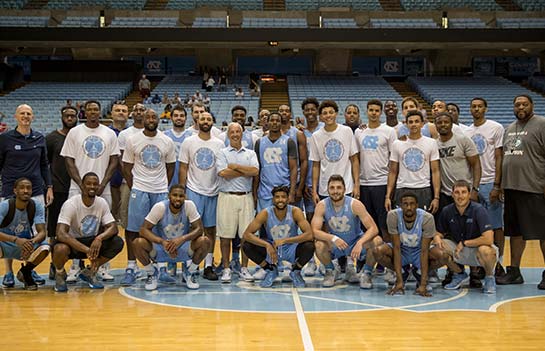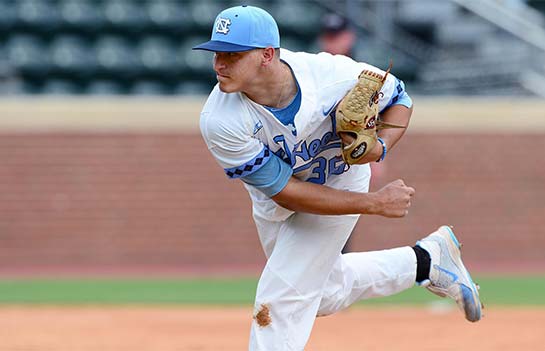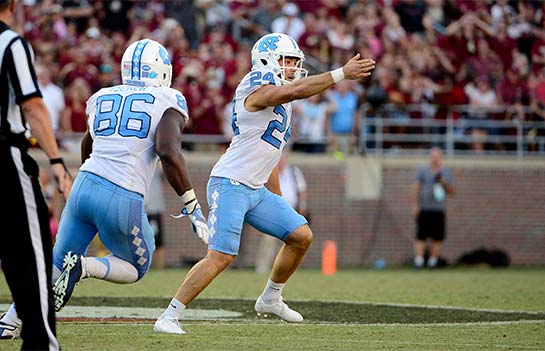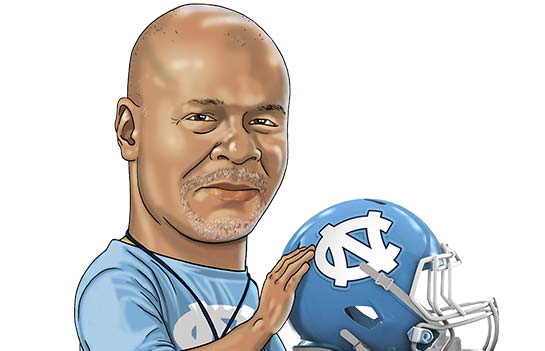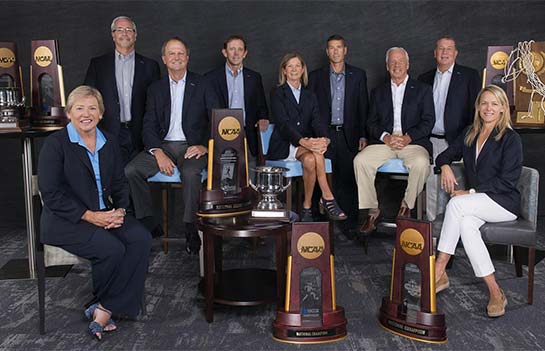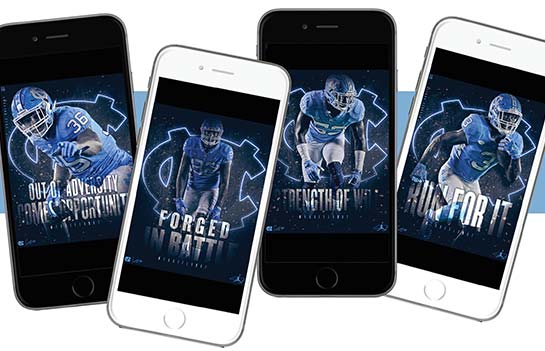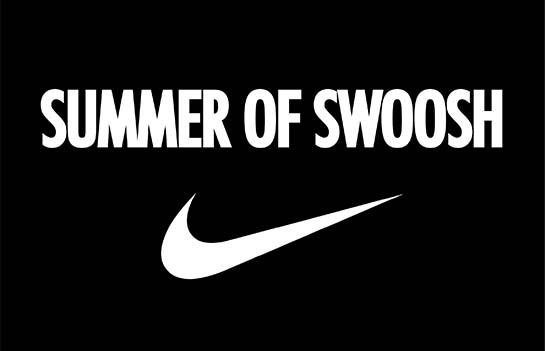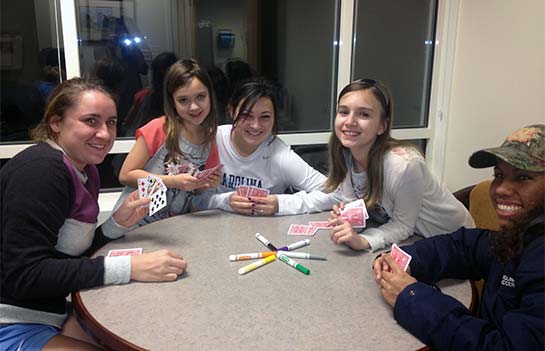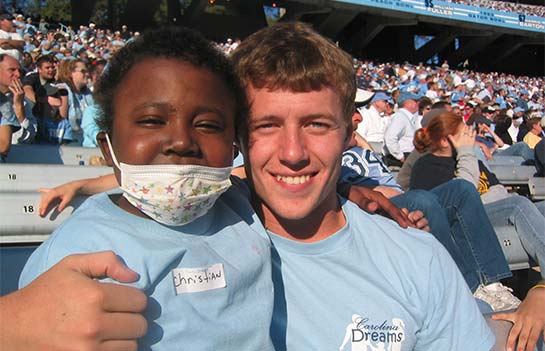CONSTANT COMMITMENT
TAR HEEL HEAD COACHES DETAIL THE COMPLEXITIES OF MODERN RECRUITING
By: ADAM LUCAS/ Photos by: JEFFREY CAMARATI & BRIAN BATISTA
The family of Carolina head volleyball coach Joe Sagula is familiar with the realities of their lives.
Anytime Coach Sagula is awake, no matter where he might be or what he might be doing, when a call or a text comes in from a recruit, the answer is immediate:
“I need to take this.”
For Tar Heel coaches, recruiting isn’t just a summer activity, or an offseason activity, or a way to fill an occasional roster hole. It’s every day, every month of the year, day and night.
“We are available 24/7 for any prospect,” Sagula says. “We encourage them within the rules to call us. So it’s not unusual to get a text at three in the afternoon from a prospect who says,
‘I’m going to try and call you tonight at 8:30.’ Well, they might be in California or Texas so the time zones can be a little tricky. And by the rules, I can’t respond to that text. But whether I’m home, or out having dinner, or anywhere I might be, when that call comes, I have to get it. If it’s a freshman or a sophomore, I can’t call them back. So if I miss a call, I have to try to call a club coach or someone like that and try to get them to call me back, and that’s not a guarantee. So I try very hard not to miss a ca ll.”
Sagula used a key phrase: “within the rules.” If the rules were written on a stone tablet somewhere, they would be easy to memorize and forget. But the NCAA-mandated requirements change on ayearly basis, sometimes in a major way. And add to the complexity that rules for every sport don’t always change simultaneously.
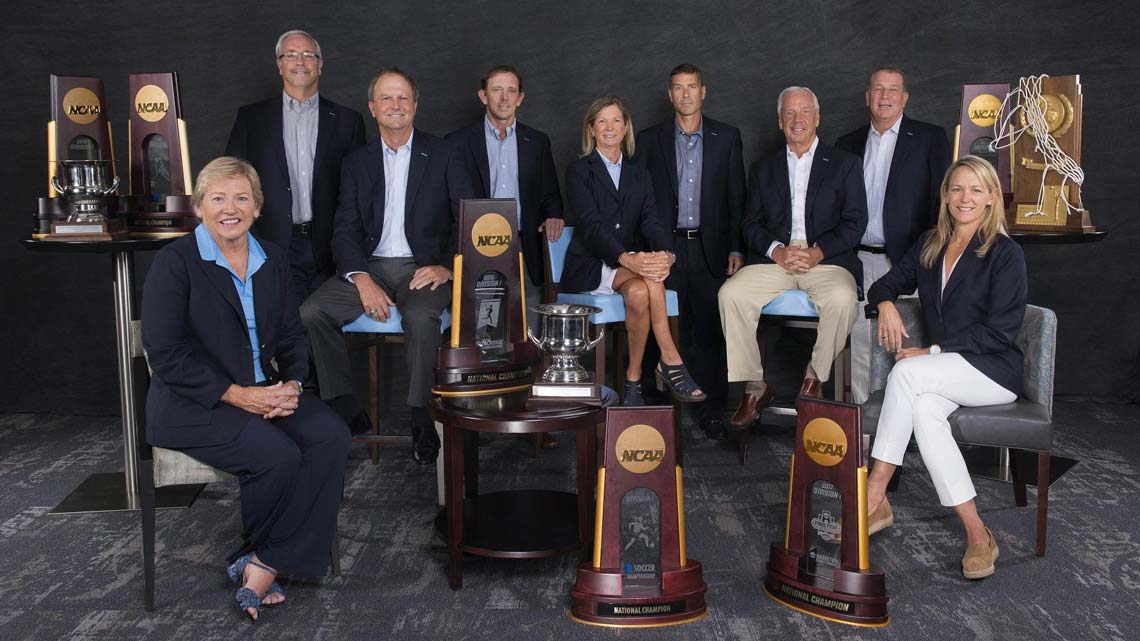
Men’s and women’s lacrosse, for example, were already operating under guidelines that restrict high schoolers from making a visit and making contact with coaches on campus until September 1 of the prospect’s junior year. Other sports followed suit in May of this year. That’s a significant change in some sports, where commitments from high school freshmen and sophomores had become routine. And the rule doesn’t necessarily eliminate those commitments, because a prospect could be willing to commit without visiting a coach on campus. It might sound far-fetched, but given the allure of a college scholarship, it’s a possibility.
“Kids are committing so early,” says men’s tennis coach Sam Paul. “That has changed a lot since I’ve been doing this. We went
from that happening in a couple of sports and now it’s trickling down into tennis. When I first got here, we’d bring uncommitted kids to basketball games during a visit in their senior year. They’d visit us on a basketball weekend and that would be a big deal for us. Then they started committing before their senior year, and now juniors are committing even earlier, and it can be even earlier in some cases.”
The recruiting timeline has become so accelerated that the key components of the process have changed. Most casual fans picture the in-home visit as being the key closing moment for a head coach seeking to secure a commitment. The reality is that in many sports, in-home visits simply don’t happen anymore, or if they do, they happen when a prospect is already committed.
Another popular misconception is that recruiting is solely about sales. That’s an important component of the process, of course, but before the interaction with a prospect can begin, there’s a long evaluation process. That’s where the timeline changes can benefit the coaches. Evaluating a high school freshman—both physically and mentally—is very different than assessing a high school junior. It never made much sense for coaches to be discussing the academic advantages of a college like the University of North Carolina with a prospect who hadn’t yet finished a year of high school.
“When you’re looking at a high school freshman, it’s all about potential,” Sagula says. “But if you’re looking at a senior, you can see what they have become. You can see how tall they are and I can see more specifically how they fit into my program. As a freshman, I can see they have talent, but there are so many unknowns.”
Those unknowns often have nothing to do with what happens on the field or on the court. At an academically rigorous school like Carolina, coaches know they can’t just recruit the most talented athletes; they have
to recruit the most talented athletes who are willing to put in the effort in the classroom and in the community.
Paul has found that one of his biggestrecruiting assets is the Kenan Flagler School of Business. Recent standouts Ronnie Schneider and Brett Clark came to Chapel Hill to play tennis, but also to enroll in the business school.
Field hockey coach Karen Shelton, whose competitors are other top-level academic institutions such as Stanford and Princeton, has learned to watch more than just what happens on the field.
“A long time ago, Coach (Roy) Williams spoke to our coaches and said he doesn’t just watch what a kid does on the field,” she says. “He watched what they do on the bench. Are they cheering their teammates on? Do they display the things in terms of heart and passion that you want on your team? That’s an important part of our evaluation.”
The recruiting process ultimately hinges on the elusive concept of fit. Does the prospect fill a need on the roster? Is the prospect willing to commit to the type of academic work required? If there’s a campus visit, what are the impressions of the current Carolina players and coaches about the prospect?
The recruiting world changes quickly. But there’s been one constant. “We’re not going to use gimmicks,” Paul says. “We have a great university and a great product. We’re proud to be able to present that to a young man. We’re giving them a great opportunity to grow as a young person. Once you get into it and you get the chance to talk about North Carolina, that’s really fun.”
This story appeared in the JUNE 2018 edition of Born & BredMore Stories
The impact of giving comes through in wonderful stories about Carolina student-athletes and coaches, as well as the donors who make their opportunities possible. Learn more about the life-changing impact you can have on a fellow Tar Heel through one of the features included here:
